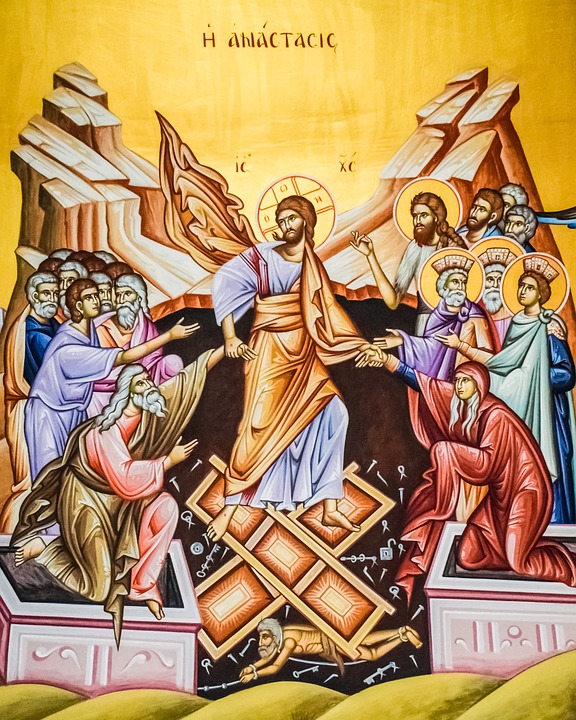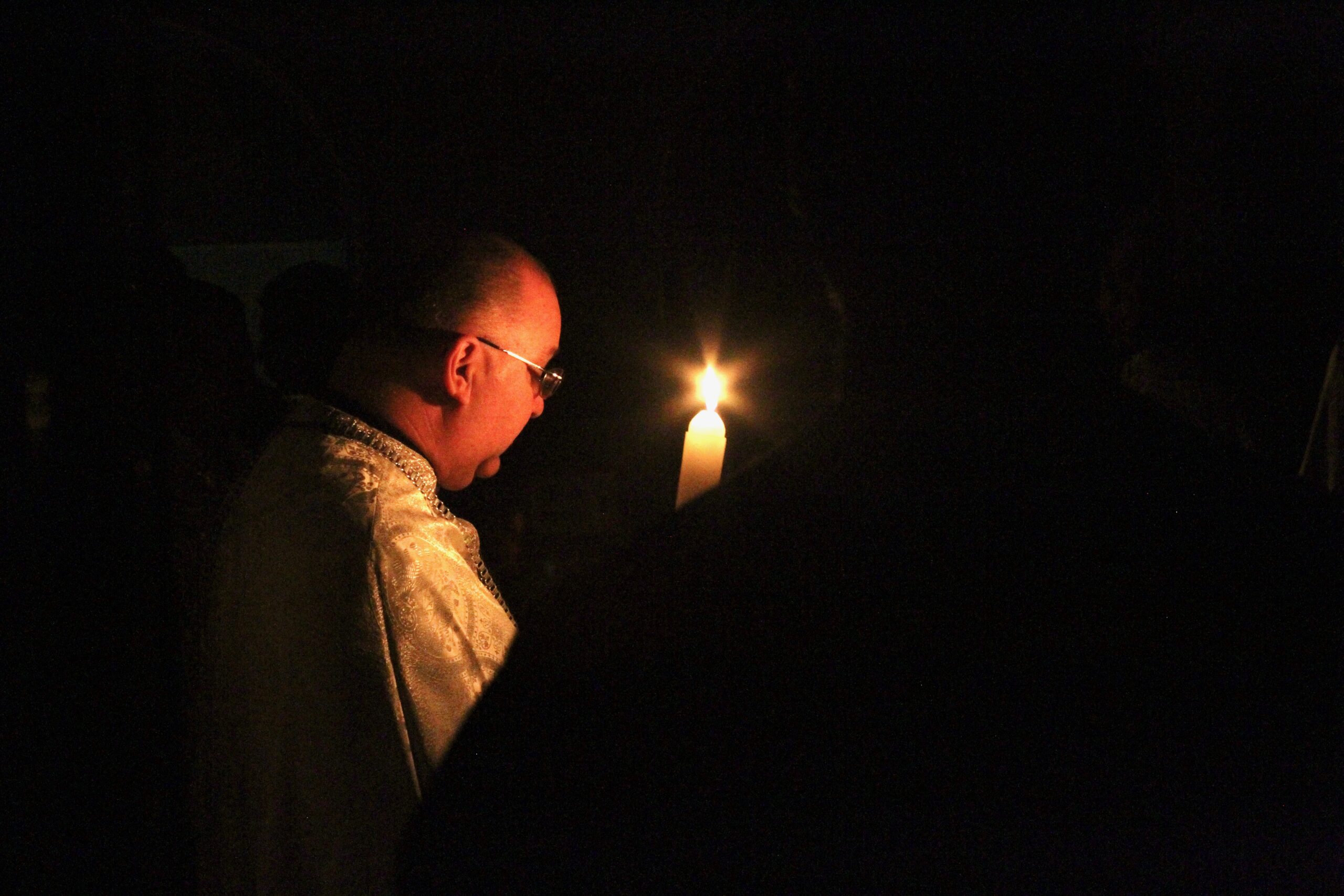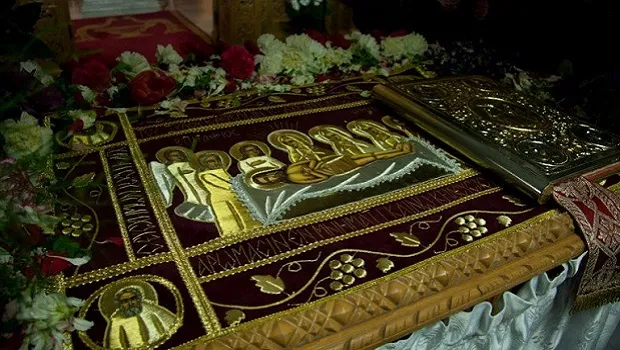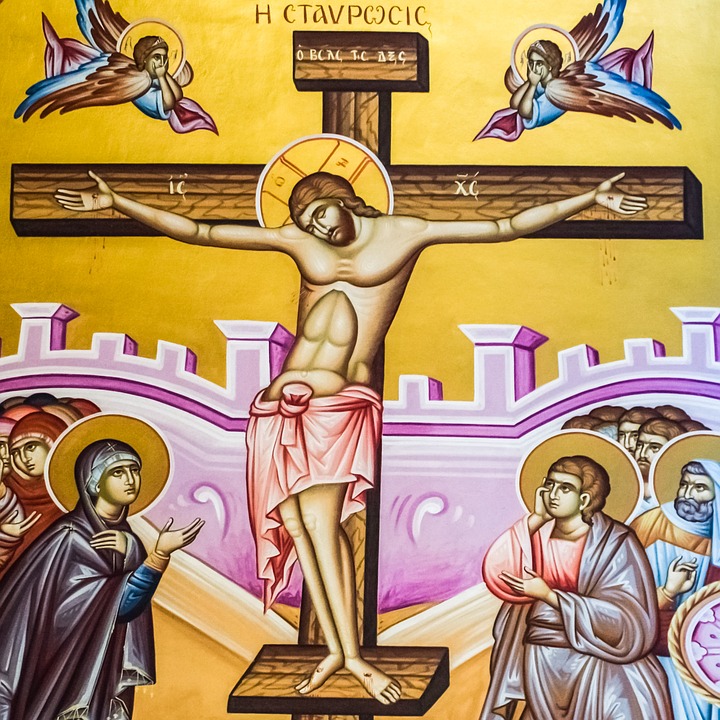This day shall be for you a memorial day, and you shall keep it as a feast to the Lord; throughout your generations you shall observe it as an ordinance forever.
Exodus 12:14
Good morning Prayer Team!
Forgive me, this post is a little longer than usual, but I hope it will be worth the read. It will give you a concrete overview of Holy Week and some specific ways to plan your journey.
No other Christian denomination can compare its liturgical “form” to that of the Orthodox Church. That is because a)We have the most complete set of worship services (comments below); b)The worship services are old—most of them date to the early centuries of Christianity, so they are historical and timeless, rather than modern; and c)they are done the same way the world over, so there is consistency.
Most people’s worship experience is restricted to the weekly celebration of the Divine Liturgy. Yet, there are MANY other worship services in the liturgical anthology of the church—such as Orthros, Vespers, Compline, Akathist, and Paraklesis, in addition to the Divine Liturgy. Our worship is restricted in part because it is not possible for many of us who work to attend services outside of Sundays. And most simply live too far away from the church to come several times a week. It is also impossible for a parish with only one full time priest, as most Orthodox churches in this country have, to offer a “full” array of services. It would be unrealistic to offer daily Orthros (morning service) and Vespers (evening service) and expect people to come to these services. So by and large they are not offered.
During Lent and especially during Holy Week, a more complete calendar of services is kept. During Lent, Sunday Liturgy is supplemented with the service of the Compline on Monday evenings, Pre-Sanctified Liturgy on Wednesday evenings and Salutations/Akathist services on Friday evenings. And during Holy Week, the liturgical calendar reaches a climax as the church offers services EVERY morning and evening for a week. This is the church at its best, because we are first and foremost a praying church, and we are at our best when the church is in an almost constant state of prayer and worship.
Holy Week-You Are There
I’ve often looked at Holy Week as a lengthy play. It has several scenes, a plot that runs all the way through, times of conflict and times of reflection, times of sorrow and times of triumph. The road is long but the reward is great. I’ve had many non-Orthodox friends who have never been to church in between Palm Sunday and Pascha. And there are many Orthodox who don’t make much of the journey in between either. But the reward of the journey, the glory of the Resurrection, is found in making the Holy Week journey in as complete a way as possible. As one of our prayers says, “Through the cross, joy has come to all the world.” And there isn’t much joy to be had at the Resurrection, if one hasn’t endured the pain of the crucifixion.
In the Holy Week journey, you are there—each event of the week is commemorated in scripture, in hymn and in action. On Holy Wednesday, for example, we pray for healing, we chant about healing, and then we approach to be anointed for physical and spiritual healing. On Holy Thursday, we read about the Passion of Christ, we chant hymns about it, and we experience the procession of the Crucified Christ. This puts us back 2,000 years ago to Jerusalem. We feel the darkness and fear in the troubled city, we stand watch over the crucifixion, we make the midnight journey with the women to the empty tomb and we return to the church to proclaim the good news that Christ is risen from the dead.
What does this do for us? It reminds us what it is we believe. This is a one-week tutorial if you will on why the Crucifixion and Resurrection are important for our lives. It reaffirms our faith—it is a “shot in the arm” so to speak of enthusiasm for being a Christian, because the week ends on a positive note, and because the journey is shared with pilgrims like us. It provides a time of new beginnings—as we will sing on Pascha, “Let all things be forgiven in the Resurrection.”
The Scenes of Holy Week
Scene One—The Triumphal Entry
Days: Saturday of Lazarus-Palm Sunday Morning
These two days provide a respite from the austerity and sadness of Great Lent. The Saturday of Lazarus commemorates the miracle of Jesus raising His friend Lazarus from the dead. And it is a foreshadowing of the general resurrection of the dead that is possible for all through Christ’s Resurrection. Palm Sunday commemorates the Triumphal Entry into Jerusalem. Jesus enters the city on a donkey and is met by thousands of people who wave palm branches and sing praises to him.
Observations: The colors for these two days are lighter, generally white on Saturday of Lazarus because of this is a Resurrectional liturgy and green on Palm Sunday. The Divine Liturgy both days is that of St. John Chrysostom. Both days are joyful in tone and nature.
Scene Two—The Early Days of Holy Week-the Final Teachings/Plotting the Betrayal
Days: Palm Sunday evening through Holy Wednesday morning
As day changes to night on Palm Sunday, the joy of the morning fades to reflective sadness on what lies ahead. The journey of the next three days is a mixture of Christ telling His followers of the end times and to remain vigilant and narrative of the Chief Priests and the plot against Christ.
Observations: The Icon of the Nymphios/Bridegroom, is carried in procession on Sunday evening and remains in the middle of the church sanctuary until after the Pre-Sanctified Liturgy on Wednesday morning. The Bridegroom service is held on Palm Sunday, Holy Monday and Holy Tuesday evenings with the Pre-Sanctified Liturgy being held on Holy Monday, Holy Tuesday and Holy Wednesday mornings. The colors worn at these services are traditionally purple and black. The lights are kept dim for these services.
Scene Three—The Upper Room
Days: Holy Wednesday Evening-Holy Thursday morning
The theme now changes to one of healing, as we commemorate the washing of the feet and the institution of the Holy Eucharist. On Holy Wednesday evening, we celebrate the Sacrament of Holy Unction and on Holy Thursday morning, the Divine Liturgy of St. Basil the Great.
Observations: The Icon of the Last Supper is displayed at both services. Traditionally crimson or deep red is worn on Holy Thursday, symbolizing the blood of Christ instituted in the New Covenant of Holy Communion and shed for the life and salvation of the world on the Cross. The Divine Liturgy of Holy Thursday morning has a joyful tone to it.
Scene Four—The Passion and Death of Christ
Days: Holy Thursday evening, Good Friday morning and Good Friday afternoon
The journey of Holy Week now goes into high gear. We move from the upper room, to the Garden of Gethsemane, to the Betrayal, the Torture, the Trial, the road to Golgotha, the Crucifixion, Death and Burial of the Lord. Between these three services, 17 Gospel passages are read, almost half of the Holy Week total. The first Gospel on Holy Thursday evening is the long discourse and High Priestly Prayer of Christ and is a beautiful passage on love and friendship. The Procession of the Crucified Christ occurs after the fifth Gospel. The faithful have an opportunity to kneel and pray before the Cross. The service of the Hours on Good Friday morning is traditionally not well attended, which almost seems appropriate. Very few followers hung on to witness the Crucifixion of the Lord. Most fled to their homes. The service of the Hours has little fanfare or pageantry, but is a quiet vigil watching over the Lord on the Cross. The Vespers of the Descent of the Cross is a good service to attend particularly if you cannot attend the other two. It summarizes the events of the previous two services adding the burial of Christ in the tomb. The body of Christ is removed from the cross and wrapped in a white linen sheet. It is entombed on the altar table for the remainder of the service and is not put back up on the cross until the Ascension forty days after Pascha.
Observations: The vestments worn at these services are purple and black. Good Friday is the only day of the year when no Divine Liturgy can be held. Also no funeral services can be done on Good Friday—the only funeral is that of the Lord. The Icon displayed is the Icon of the Crucifixion.
Scene Five—The Lamentations
Day: Good Friday Evening
This is a service of transition between the sadness of Holy Thursday and the joy of the Resurrection. The color worn at this service is traditionally gold or red. The lights are turned up again for the first time since Palm Sunday. This service is highlighted by the singing of the Lamentations and the procession around the outside of the church with the tomb of the Lord. In terms of the Holy Week narrative, however, very little is covered. The Gospel is only 4 verses long and is a repeat of the 12th Gospel of Holy Thursday night. The Prophecy of Ezekiel and the Epistle reading from the book of Corinthians are important scriptural references. The icon displayed for this service is the icon of the Extreme Humility. It shows Christ going into the tomb with the cross in the background. Many people flock to the Good Friday service for the “pageantry”—the Lamentations, the Procession, etc. In my opinion, while this is one of my favorite services in Holy Week to celebrate, it is not one of the most important. Certainly Holy Thursday evening, the Gospel narratives of the Passion and the Procession of the Crucified Christ rank of higher importance. So, while I encourage you to attend as many services of the week as possible, I would actually consider this service not as important as many others.
Scene Six—The Empty Tomb
Days: Holy Saturday Morning-Holy Saturday Evening-Easter Sunday
There are two Paschal Liturgies, that is two liturgies that commemorate the Resurrection of Christ. In the ancient church, there was an all-night vigil commemorating the Resurrection with the Vespers and Liturgy of St. Basil being held in the evening hours of Holy Saturday, the Resurrection Service at midnight, and the Orthros and Liturgy of St. John Chrysostom being held on Sunday morning. In recent centuries, this has been changed. The Resurrection service is still held at midnight. The Orthros and Divine Liturgy of St. John Chrysostom follow immediately, from 12:30-2:00 a.m. And the Vespers and Liturgy of St. Basil have been transposed to Holy Saturday morning. Thus, we proclaim the Resurrection with “Arise o God,” “Anasta o Theos,” from the morning of Holy Saturday. The Holy Saturday morning Liturgy commemorates the first announcement of the Resurrection to those who were in Hades. Jesus Christ descended into Hades and bestowed eternal life to those who had been held captive there. The Resurrection Service and the Liturgy which follows commemorate the Resurrection of Christ from the dead.
Observations: The color for Pascha traditionally is White. On Holy Saturday morning, bay leaves are scattered throughout the church as a sign of Christ’s victory over Hades and death. Prophecies foretelling the Resurrection are read, including the Prophecy of Jonah and the whale (the three days Jonah spends in the belly of the whale foreshadow the three days of Christ in the tomb) and the Prophecy of Daniel (The three youths saved from the fiery furnace). The Liturgy of St. Basil follows. This is a longer liturgy than that of St. John Chrysostom. The Resurrection service begins with the chanting of the Canon of Good Friday at 11:00 p.m. This is a summary, if you will, of the events of Holy Week. There is an actual closing to the period of the Great Lent, where petitions are said for the well-being of the community as we close the Lenten season and anticipate the Resurrection. The Great and Holy Lent concludes with “Through the Prayers of our Holy Fathers, Lord Jesus Christ, our God, have mercy on us and save us.” This is traditionally how we end all the services in our church, except for those services between Easter and Ascension. “Through the prayers of our Holy Fathers. . .” will not be said again in the church until Ascension. The lights in the church are completely extinguished, except for the Vigil Candle on the Altar Table.
The priest lights his candle from a solitary light in the altar, the vigil candle that is in front of the tabernacle. He comes through the Royal Doors and chants “Come receive the Light, from the everlasting Light and glorify Christ, who is risen from the dead.” The light is then “passed” to all in the church. A procession is made outside to the empty tomb, where the Gospel of the Resurrection is read and we sing “Christos Anesti-Christ is Risen” proclaiming the Resurrection of Christ. We then return to the church and turn all the lights on, and celebrate the Divine Liturgy for the “feast of feasts” the Resurrection of our Lord.
Having celebrated the Divine Liturgy in the early hours of the morning, there is no Liturgy at 10:00 a.m. on Easter Sunday, ironically the only Sunday of the year where that is the case. On Easter Sunday morning, we celebrate the Agape Vespers from 11:00 a.m.-noon. This is a brief service where we chant “Christos Anesti” many times and read the Gospel in many languages. This is a reminder to us that we are to share the good news of the Resurrection of Christ to all peoples in all languages.
THE HOLY WEEK PLAN
Here is an idea to help you get the most out of your Holy Week experience this year. (Obviously it is the ideal to attend as many services as possible each year, because Holy Week is where we re-learn, re-live and recommit to the message of salvation that plays out in the services. For those who are retired or not working, this is a great opportunity to attend all of the Divine Services) Here is a practical guide to celebrating Holy Week this year:
Choose at least one service from each scene, 1-4 and 6. I consider scene five almost “optional.”
Scene One-Pick either Saturday of Lazarus or Palm Sunday, to experience the “joy” and “hope” of these feastdays, as well as the temporary break from the austerity of Great Lent
Scene Two-Pick at least one of the early services of Holy Week, either an evening Bridegroom service or a morning Pre-Sanctified Liturgy and you’ll get a better understanding of the theme of watchfulness.
Scene Three-Pick either Holy Unction on Holy Wednesday or the Liturgy on Holy Thursday morning to experience healing and the Institution of the Holy Eucharist. Ideally, pick both so you can receive Holy Unction and Holy Communion
Scene Four-After the final scene of the Resurrection, SCENE FOUR is the most important. It is very important for us to stand with Christ as He hangs on the cross. Holy Thursday evening, Good Friday morning and Good Friday afternoon afford us this opportunity, so choose at least one of these to attend.
Scene Five (optional)—While one of the most popular services of Holy Week, Good Friday evening is not even one of the most important or moving. Come to this one only if you’ve done a good number of the other ones.
Scene Six—The victory scene—It is obviously most important, after the journey of Great Lent, to experience the joy of the resurrection. Pick either Holy Saturday morning, Holy Saturday evening or the Agape Vespers on Sunday morning.
AND NOW A COUPLE OF WORDS ABOUT SUBSTANCE
As I said at the outset, no other Christian Church in the world has the FORM of the Orthodox when it comes to celebrating Holy Week—the processions, the pageantry, the vast amount of scripture readings, and the moving hymns. Unfortunately, for many, we almost worship for the form, forgetting the substance. This is apparent even in how we speak about the services. We say that on Holy Wednesday, we go to church to “get the oil.” Yet, it’s more than that—we go to be anointed for “healing of soul and body.” It’s so much more than getting the oil. We tend to focus on the “souvenirs” of Holy Week—That’s why many people come just to the services where they get to take something home, like oil on Holy Wednesday, or a flower on Good Friday or a Palm on Palm Sunday, but they don’t come to Holy Monday evening, or the Great Hours of Good Friday. Many people come to church on Pascha who never come to church during the year, and they light their candle, sing Christos Anesti and think they’ve done a great thing.
The most important thing about Holy Week is the substance. The opportunity to receive Holy Communion 8 times in 9 days is an opportunity to keep ourselves in a perpetual state of readiness. Holy Wednesday is an opportunity to pray for our own physical and spiritual healing. Holy Thursday is an opportunity to kneel before the Cross of Christ, and leave anger and disappointment at the foot of His cross. The long Holy Week Book provides us an opportunity to relearn what it is we believe about Jesus Christ, salvation, heaven, the Resurrection and many other topics. Just about all of our theology in the Orthodox Church is found in the Holy Week Book.
All the ends of the earth shall remember and turn to the Lord; and all the families of the nations shall worship before Him. For dominion belongs to the Lord, and He rules over the nations. Yea, to Him shall all the proud of the earth bow down; before Him shall bow all who go down to the dust, and he who cannot keep himself alive. Posterity shall serve Him; men shall tell of the Lord to the coming generation, and proclaim His deliverance to a people yet unborn, that He has wrought it. Psalm 22: 27-31
So, make a Holy Week plan for yourself, invest some time in the form, open your heart to the substance, and I guarantee you will have a meaningful Holy Week journey. May our journeys bring each of us spiritual comfort, refreshment and renewal, and may we rejoice in the Resurrection of Christ on Pascha and throughout the year.



